3D printing with PLA vs. PETG: What's the difference?
Learn the benefits of PLA and PETG, when you should use one instead of the other, post-processing techniques that work for both materials, and more.
Read articleYou’ve come to the right place. Hubs is now Protolabs Network.
The same broad capabilities, exceptional quality and competitive pricing under a new brand.






EN
What’s the best material for machining your parts? Check out this side-by-side comparison of the strength, price and application for CNC plastics and metals (in a handy, printable poster).
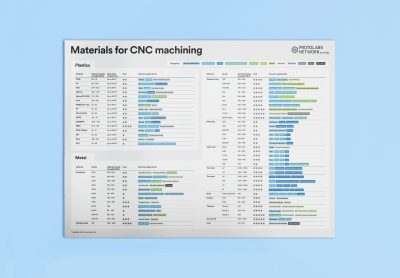
There are so many metal and plastic materials available for CNC machining, which makes it tricky to know which to choose for your application. Materials partly dictate the final cost and quality of your parts, so you want to be as informed as possible.
And while it's handy to have access to detailed comparisons of all the major materials available on Protolabs Network, it's optimal to have a single resource for making quick, smart comparisons.
This comprehensive poster contains all the information you need to know about CNC machining materials, including:
Prices of all CNC materials compared
Material strength
Operating temperature
Ultimate tensile strength (MPa)
Common applications across major industries
Download the materials for CNC poster to better determine which materials fit your application.
Know which materials you're using for your CNC parts?


Learn the benefits of PLA and PETG, when you should use one instead of the other, post-processing techniques that work for both materials, and more.
Read article
Learn the benefits of PLA and PLA+, when you should use one instead of the other, post-processing techniques that work for both materials, and more
Read article
Nylon, also known as polyamide (PA) is a synthetic polymer with high tensile strength, excellent resistance to wear and abrasion, and a low coefficient of friction. Here’s how it’s used in manufacturing and engineering applications.
Read article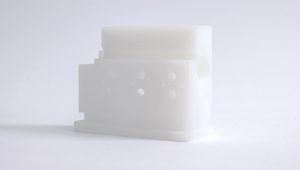
Want to learn more about chemically resistant parts? Find out about common chemical-resistant materials, their advantages, disadvantages, and industrial applications.
Read article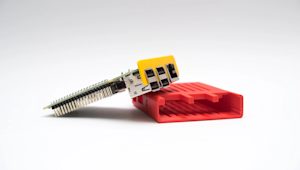
Polylactic acid, also known as PLA, is a thermoplastic material commonly used in additive manufacturing. It is one of the most commonly used materials in 3D printing, and can be used to create a wide range of parts, packaging, and prototypes for the medical, food, cosmetics, and textile industries, among others.
Read article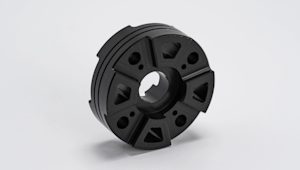
What is Delrin and why is it unique among the many manufacturing materials available? Delrin, or POM-H (homopolymer acetal), is used in CNC machining, 3D printing and injection molding to create durable, precise components. This article explores Delrin’s properties and how to get the most out of the material.
Read article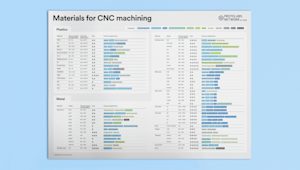
What’s the best material for machining your parts? Check out this side-by-side comparison of the strength, price and application for CNC plastics and metals (in a handy, printable poster).
Read article
This comprehensive guide compares the 25 most common materials used in CNC machining and helps you choose the right one for your application.
Read article
What are the different materials available for SLA 3D printing? This article compares the main printing resins, including standard, tough, durable, heat resistant, rubber-like, dental and castable, by material properties. Find the best material option for your application.
Read article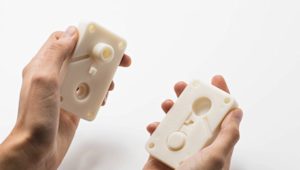
We compare critically two industrial 3D printing materials used for low-run injection mold manufacturing.
Read article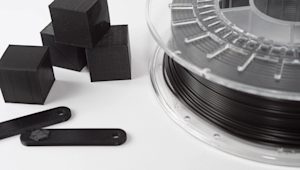
What’s the ideal material to use when 3D printing parts with FDM? This article compares the most common FDM 3D printing filaments, including PLA, ABS, PET, Nylon, TPU (Flexible) and PC, by their material properties to help you find the best option for your application.
Read article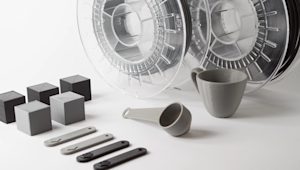
PLA and ABS are two essential materials for 3D printing with FDM. They are also two of the most popular materials on our platform. This comparison will help you choose which material to use for your 3D-printed custom parts.
Read article
Learn the benefits of PLA and PETG, when you should use one instead of the other, post-processing techniques that work for both materials, and more.
Read article
Learn the benefits of PLA and PLA+, when you should use one instead of the other, post-processing techniques that work for both materials, and more
Read article
Nylon, also known as polyamide (PA) is a synthetic polymer with high tensile strength, excellent resistance to wear and abrasion, and a low coefficient of friction. Here’s how it’s used in manufacturing and engineering applications.
Read article
Want to learn more about chemically resistant parts? Find out about common chemical-resistant materials, their advantages, disadvantages, and industrial applications.
Read article
Polylactic acid, also known as PLA, is a thermoplastic material commonly used in additive manufacturing. It is one of the most commonly used materials in 3D printing, and can be used to create a wide range of parts, packaging, and prototypes for the medical, food, cosmetics, and textile industries, among others.
Read article
What is Delrin and why is it unique among the many manufacturing materials available? Delrin, or POM-H (homopolymer acetal), is used in CNC machining, 3D printing and injection molding to create durable, precise components. This article explores Delrin’s properties and how to get the most out of the material.
Read article
What’s the best material for machining your parts? Check out this side-by-side comparison of the strength, price and application for CNC plastics and metals (in a handy, printable poster).
Read article
This comprehensive guide compares the 25 most common materials used in CNC machining and helps you choose the right one for your application.
Read article
What are the different materials available for SLA 3D printing? This article compares the main printing resins, including standard, tough, durable, heat resistant, rubber-like, dental and castable, by material properties. Find the best material option for your application.
Read article
We compare critically two industrial 3D printing materials used for low-run injection mold manufacturing.
Read article
What’s the ideal material to use when 3D printing parts with FDM? This article compares the most common FDM 3D printing filaments, including PLA, ABS, PET, Nylon, TPU (Flexible) and PC, by their material properties to help you find the best option for your application.
Read article
PLA and ABS are two essential materials for 3D printing with FDM. They are also two of the most popular materials on our platform. This comparison will help you choose which material to use for your 3D-printed custom parts.
Read articleShow more
Show less